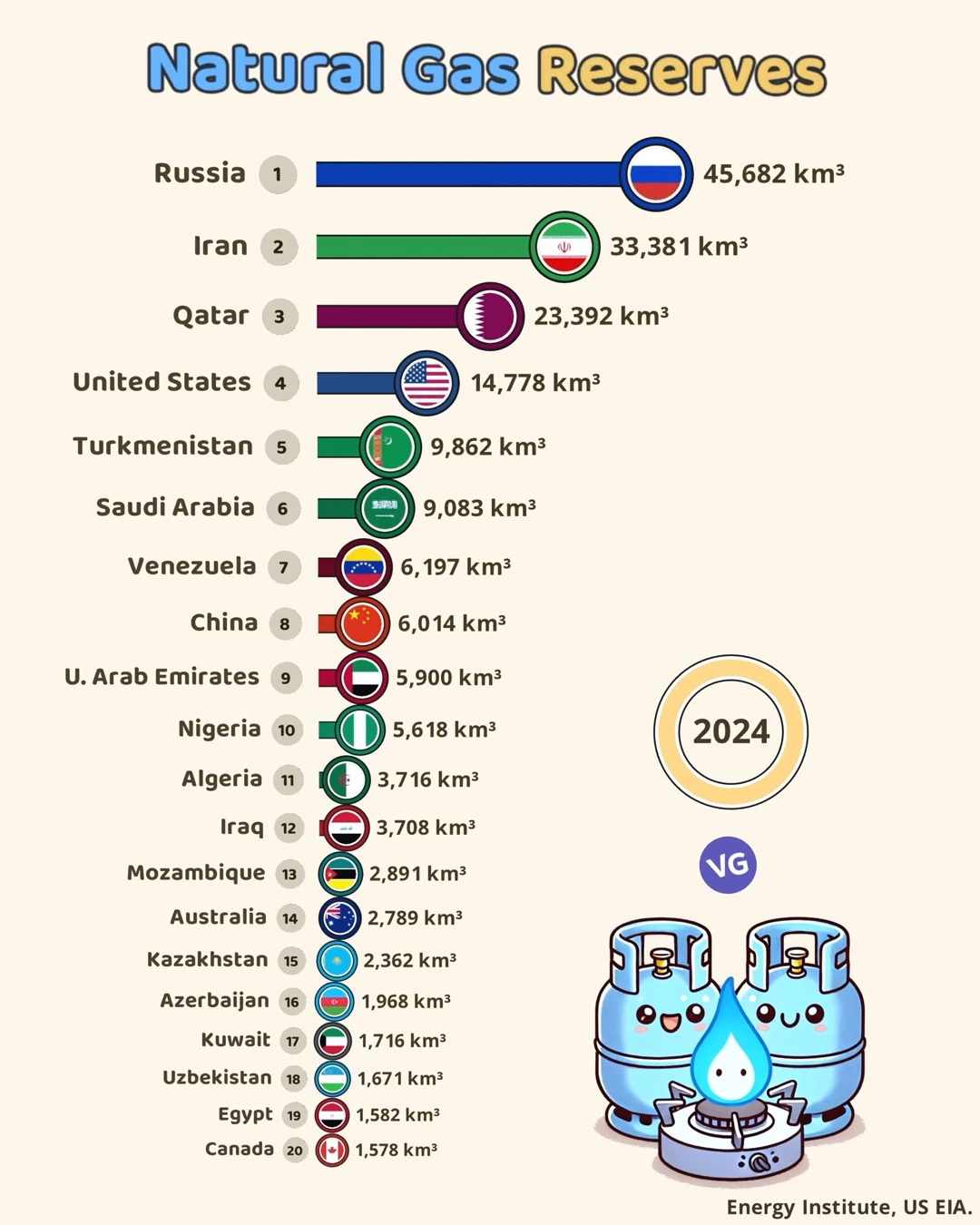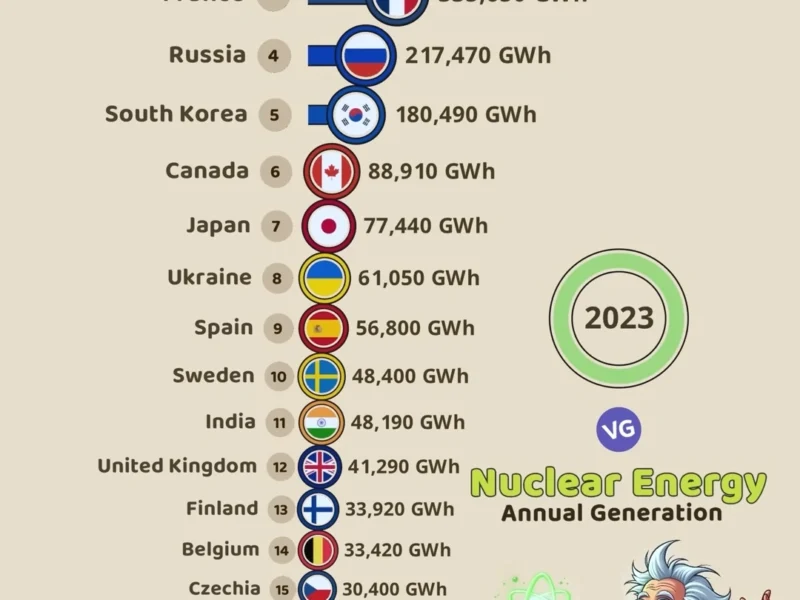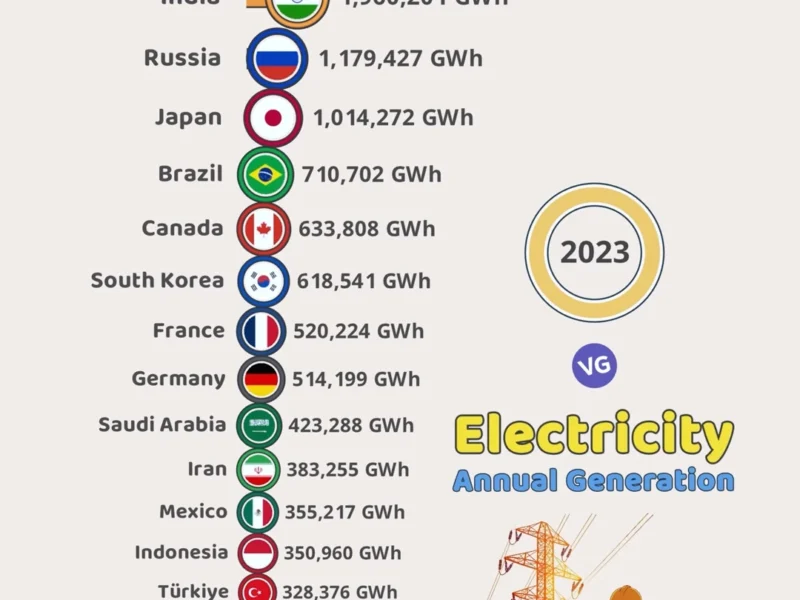The Global Leaders and Their Strategic Influence
The distribution of natural gas reserves across the globe tells a fascinating story of energy geopolitics and economic potential. Recent data from the Energy Institute and US EIA reveals a compelling hierarchy of nations sitting atop vast stores of this crucial fossil fuel, with implications for global energy security and economic power.
Top 20 Countries by Natural Gas Reserves (2024)
| Rank | Country | Reserves (km³) |
|---|---|---|
| 1️⃣ | 🇷🇺 Russia | 45,682 km³ |
| 2️⃣ | 🇮🇷 Iran | 33,381 km³ |
| 3️⃣ | 🇶🇦 Qatar | 23,392 km³ |
| 4️⃣ | 🇺🇸 United States | 14,778 km³ |
| 5️⃣ | 🇹🇲 Turkmenistan | 9,862 km³ |
| 6️⃣ | 🇸🇦 Saudi Arabia | 9,083 km³ |
| 7️⃣ | 🇻🇪 Venezuela | 6,197 km³ |
| 8️⃣ | 🇨🇳 China | 6,014 km³ |
| 9️⃣ | 🇦🇪 United Arab Emirates | 5,900 km³ |
| 🔟 | 🇳🇬 Nigeria | 5,618 km³ |
| 1️⃣1️⃣ | 🇩🇿 Algeria | 3,716 km³ |
| 1️⃣2️⃣ | 🇮🇶 Iraq | 3,708 km³ |
| 1️⃣3️⃣ | 🇲🇿 Mozambique | 2,891 km³ |
| 14️⃣ | 🇦🇺 Australia | 2,789 km³ |
| 15️⃣ | 🇰🇿 Kazakhstan | 2,362 km³ |
| 16️⃣ | 🇦🇿 Azerbaijan | 1,968 km³ |
| 17️⃣ | 🇰🇼 Kuwait | 1,716 km³ |
| 18️⃣ | 🇺🇿 Uzbekistan | 1,671 km³ |
| 19️⃣ | 🇪🇬 Egypt | 1,582 km³ |
| 20️⃣ | 🇨🇦 Canada | 1,578 km³ |
Russia stands as the undisputed leader in natural gas reserves, holding an impressive 45,682 cubic kilometers of proven reserves. This enormous capacity not only cements Russia’s position as an energy superpower but also gives it significant geopolitical leverage, particularly in its relationships with European nations dependent on natural gas imports.
Middle East Dominance and Regional Powers
Following Russia, Iran holds the second-largest reserves at 33,381 cubic kilometers, representing a substantial portion of the Middle East’s natural gas wealth. Qatar rounds out the top three with 23,392 cubic kilometers, making the Middle East region a crucial hub for global natural gas resources. The concentration of vast reserves in this region highlights its strategic importance in global energy markets.
Emerging Players and Global Distribution
Interestingly, the United States ranks fourth with 14,778 cubic kilometers of reserves. This position, combined with technological advances in extraction methods like hydraulic fracturing, has transformed the US into a major player in global natural gas markets, shifting from a net importer to an increasingly important exporter.
The data reveals some surprising entries in the top 20, including Mozambique at position 13 with 2,891 cubic kilometers of reserves. This African nation’s significant reserves highlight the emerging importance of African countries in the global energy landscape and their potential for economic transformation through resource development.
Asian Influence and Regional Dynamics
Another notable observation is China’s position at eighth place with 6,014 cubic kilometers of reserves. Despite these substantial reserves, China’s massive population and industrial base mean the country remains a significant importer of natural gas to meet its growing energy demands.
The presence of multiple Central Asian nations – Turkmenistan (5th), Kazakhstan (15th), and Uzbekistan (18th) – underscores this region’s emergence as an important player in global energy markets. Turkmenistan, in particular, stands out with its impressive 9,862 cubic kilometers of reserves, positioning it as a key potential supplier for both European and Asian markets.
Implications for Global Energy Security
The data also reveals interesting patterns in the distribution of reserves. While the Middle East is well-represented with Iran, Qatar, Saudi Arabia, UAE, and Kuwait all making the list, the geographical diversity of major reserve holders suggests that no single region has a monopoly on natural gas resources.
This global distribution of natural gas reserves has significant implications for energy security and international relations. Countries with substantial reserves often leverage their resources for diplomatic and economic advantage, while those lacking such reserves must carefully manage their energy relationships and security.
Looking ahead, these natural gas reserves will play a crucial role in the global energy transition. While the world moves toward renewable energy sources, natural gas is widely seen as a bridge fuel, offering a lower-carbon alternative to coal while maintaining the reliability needed for baseload power generation.
Understanding this distribution of natural gas reserves is crucial for policymakers, energy companies, and investors as they navigate the complex landscape of global energy markets and work toward a sustainable energy future.



